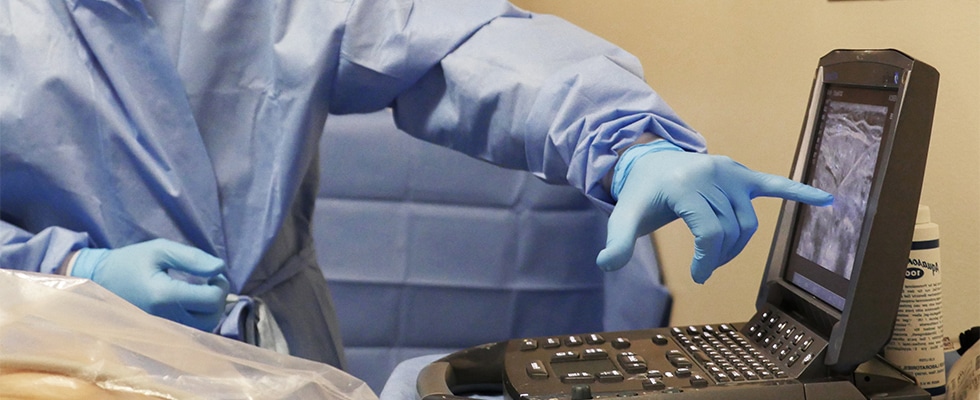
In an ongoing attempt by Maverick Medical Education to partner with and train medical providers across the country on pain management techniques, our team has learned about what works, what doesn’t, and everything in between. By diligent practice and research, we can help reduce the number of opioids prescribed to patients by utilizing alternative methods for pain reduction. Occasionally, there are adjustments to be made in very common blocks, like the femoral nerve block, that will make everyone more effective.
Background
The femoral nerve block can be very effective in eliminating the pain felt by patients in different situations. In one study reported by the American College of Emergency Physicians, for patients who suffered acute hip fracture felt pain reductions by about 50% and decreased the use of IV pain medication. The targeted nerve lays close to the femoral artery, sharing the same name. Ideal placement of the nerve block involves ultrasound guided navigation allowing for pertinent anatomy to be visible while the needle is advanced, and medication is administered. According to the American College of Emergency Physicians, the anesthesia will ideally “spread between the fascial plane and the iliacus muscle.” Both bupivacaine and lidocaine are acceptable anesthetics for this particular nerve block.
Issue with Ultrasound
While issues can arise with technology, it is far more common for error to take place with the person using the technology in matters of correctly identifying anatomy and measuring distances needed to properly perform different techniques. If the ultrasound probe is placed “distal to the bifurcation of the common femoral artery” there is an increased likelihood of capturing the superficial and deep femoral arteries instead of the common. The needle will then move too far under the fascia iliaca and too far away from the femoral nerve it was targeting.
Another common issue, as the ultrasound probe is being used, is the angle of the probe as anatomy is identified. Many will move the probe around at an angle, making it easier on the medical provider to alter the image seen. While this may be more comfortable, it actually makes the image less clear. When the probe is held perpendicular to the femoral artery, the fascia iliaca and the iliacus muscle easier to visualize, allowing for perfect needle placement for optimal pain relief. With the ideal placement of the nerve blocking anesthesia, more effective and longer lasting pain management will occur, allowing the patient to be comfortable and for the body to begin the healing process.
The combination of ultrasound technology and nerve blocking pain relief techniques are two elements of medical practice that our team at Maverick Medical Education is passionate about. To learn more about our medical education classes, on pain management and other topics, contact us today.

